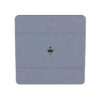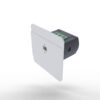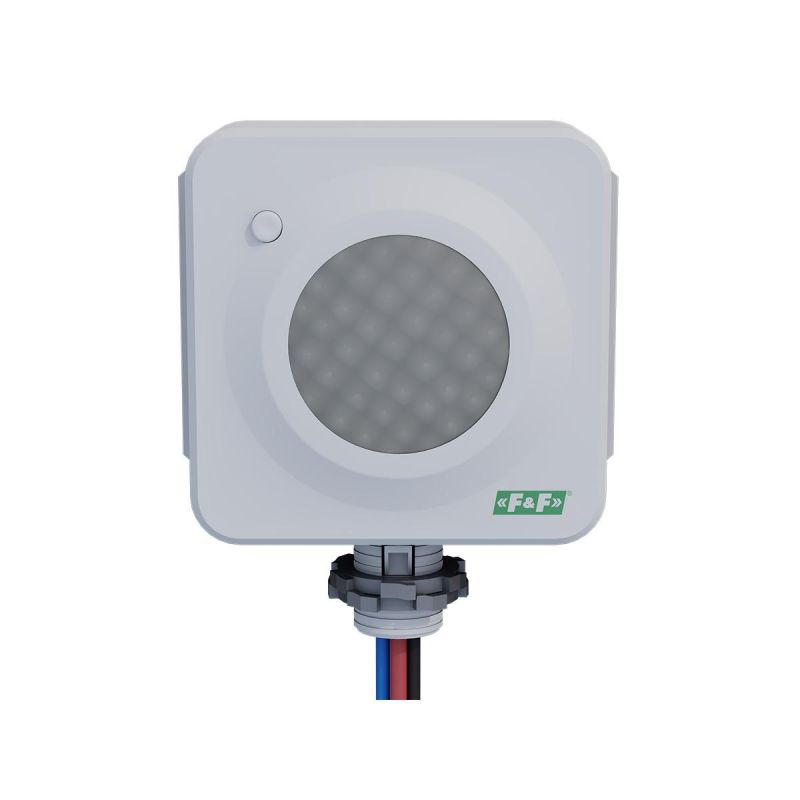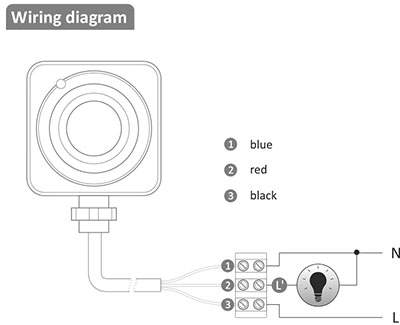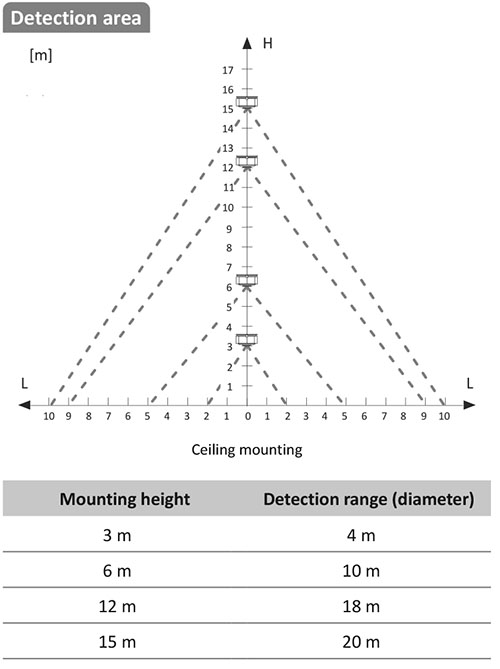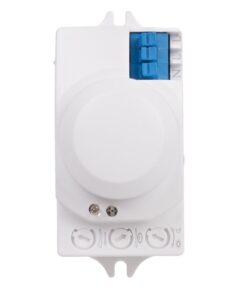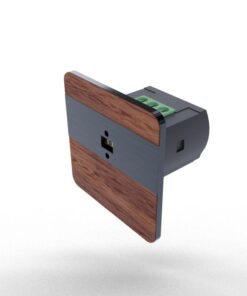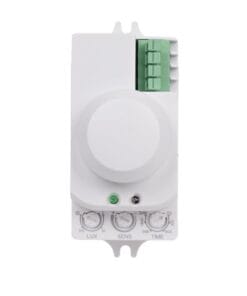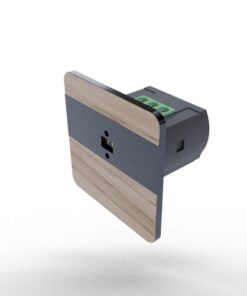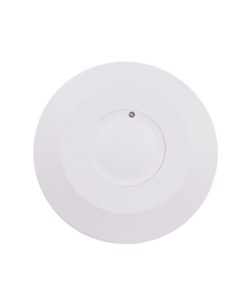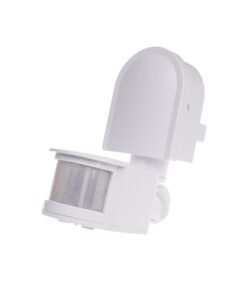Functioning
The sensor detects sources of infrared radiation and analyzing parameters such as the amount of heat emitted and the speed at which the object moves determines the switching of the lighting. Infrared sensors have the highest performance when detecting motion perpendicular to the sensor axis and the lowest when motion is directly in the direction of the sensor. Only if there is no movement in the detection area triggers the lighting support time. Another movement in the detection area and its subsequent disappearance in the course of time measurement starts the support time from the beginning.
Thanks to the advanced digital signal processing technology, the DR-30M is capable of detecting movement at distances up to 30 m (wall mounting) and in a circle with a diameter of 20
m in the case of ceiling mounting (mounting height 15 m). The motion sensor has a built-in programmable twilight switch that prevents the lighting from being switched on during the day. The maximum detection range and the lighting switching time are also programmable.
Attention!
High temperatures may adversely affect the sensitivity of the device. Also, movement that is too slow or fast can limit the sensitivity of the sensor.
The heat emitted by a motion sensor-controlled light source can lead to accidental self-excitation of the sensor. Therefore, the sensor should be mounted at a reasonable distance from the light source (min. 60÷100 cm) and in such a way that the light source is outside the detection area of the sensor.
The maximum load capacity of the relay contacts depends on the nature of the load and the supply voltage. When installing the controller, observe the following indicative load ratings:


